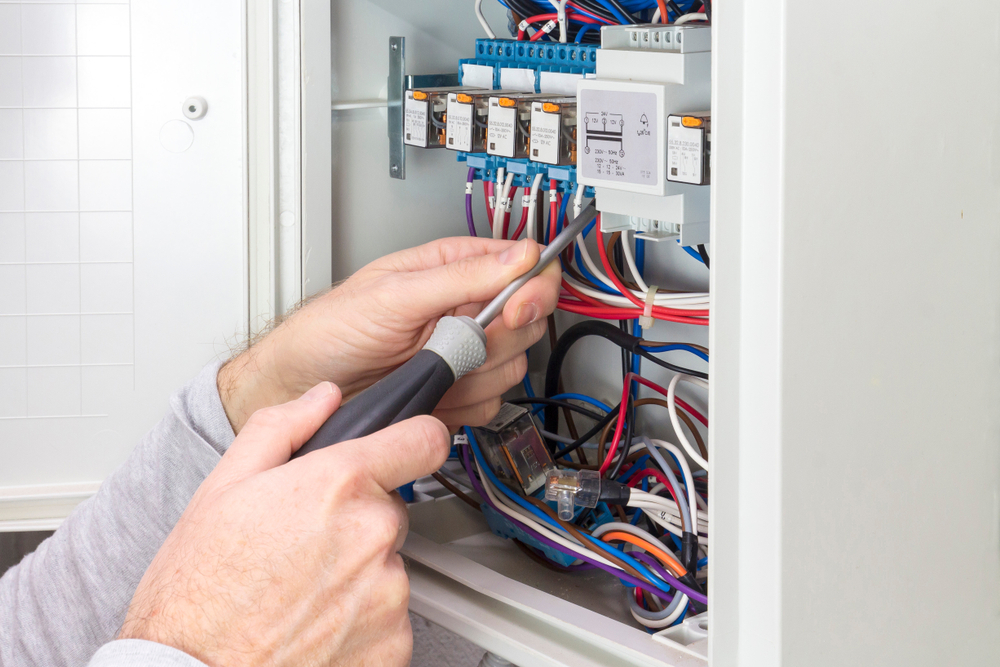
Electricity is the backbone of any modern home, powering everything from lights to appliances. A well-planned electrical distribution system keeps energy flowing safely and efficiently to all corners of your home. Without it, homeowners may experience overloaded circuits, frequent outages, and even fire hazards—all avoidable issues.
Here, experts in electrical panel installation in Ewa Beach, HI, explore how electrical distribution systems work.
Understanding Electrical Distribution in the Home
Home electrical distribution begins when power from utility lines reaches the electrical service panel. From there, electricity is divided into circuits, with each area getting the power it needs without overloading the system. A properly installed panel prevents overheating and electrical failures, making expert installation essential.
Key components include:
- Service panel: The main hub directing electricity to different circuits
- Circuit breakers: Safety devices that shut off power if a circuit overloads
- Wiring system: Channels that transport electricity to outlets and fixtures
An outdated or poorly installed distribution system can lead to inefficiencies and safety risks.
DIY vs. Professional Electrical Work: A Comparative Guide
Homeowners may consider DIY electrical work to cut costs, but even minor mistakes in conducting electrical services upgrades can lead to serious, irreversible problems. Electrical codes exist for a reason—they protect people from shocks, fires, and system failures. Violating them can result in expensive repairs and legal issues.
Key risks of DIY electrical work:
- Incorrect wiring leading to power failures or hazards
- Overloaded circuits that increase fire risks
- Code violations that require costly corrections
Working with a professional ensures safe, code-compliant work that protects both the home and its occupants.
Understanding Electrical Load Calculations
Electrical load calculations determine how much power a home needs. This process helps prevent overloaded circuits and ensures the service panel can handle current and future electrical demands.
Factors affecting load calculations:
- Total wattage of appliances and lighting
- Number of circuits required for proper distribution
- Potential future electrical needs, like EV chargers or home automation
A licensed electrician can assess these factors and recommend appropriate panel upgrades.
Cost-Effective Electrical Upgrades
Upgrading an electrical system doesn’t have to be expensive. Some improvements offer better efficiency and safety without a hefty price tag.
Budget-friendly upgrades that homeowners should consider:
- LED lighting to reduce energy consumption
- Smart thermostats and power strips for better energy management
- Surge protectors to safeguard expensive electronics
These additions are budget-friendly ways to improve efficiency without requiring a full system overhaul.
Preparing Your Home for an Electrical Inspection
Before an inspection, homeowners should verify that their system meets code requirements and operates safely. Failing an inspection can delay projects and increase costs.
Steps to prepare:
- Check panel labeling: Ensure circuits are correctly marked
- Inspect outlets and switches: These are crucial for making sure connections are secure
- Check smoke and carbon monoxide detectors: Make sure that these are functional
When in doubt, call a licensed electrical contractor. Have them identify and address potential issues before an official inspection.
Troubleshooting Common Electrical Problems
Although some electrical issues are easy to spot, proper diagnosis requires expertise. Some problems signal minor fixes, while others indicate serious system flaws.
Common problems include:
- Flickering lights (loose wiring or circuit overloads)
- Frequent breaker trips (excessive load on a circuit)
- Burning smells from outlets (potential electrical fire risk)
If any of these occur, homeowners should consult a professional rather than attempting repairs themselves.
Future-Proofing Your Home’s Electrical System
Homes and the appliances inside them require more and more power because of advancements. To avoid costly or repeated electrical work later, be sure to plan ahead.
Smart upgrades worth considering:
- Higher-capacity service panels to accommodate new devices
- Dedicated circuits for electric vehicle chargers and home automation
- Wiring adjustments for solar panels or battery backups
- A 200 ampere upgrade, especially for older homes
Installing these features early saves time and money as electrical needs grow.
Electrical Distribution Evolution
Electrical systems have come a long way from basic wiring and fuse boxes. Modern technology prioritizes efficiency, safety, and convenience.
Key advancements include:
- Circuit breaker panels replacing outdated fuse boxes
- Smart electrical systems enabling remote monitoring and control
- Energy-efficient wiring reduces power loss and increases lifespan
Today’s systems are built for longevity, but only if properly installed and maintained.
A well-designed electrical system supports a home’s daily operations without interruptions or hazards. Licensed electricians ensure proper installation, compliance with safety codes, and adaptability for future upgrades.
From lowering safety risks to enhancing efficiency, homeowners could do no wrong in investing in professional services. Don’t cut corners—hire an expert to keep your home powered.
